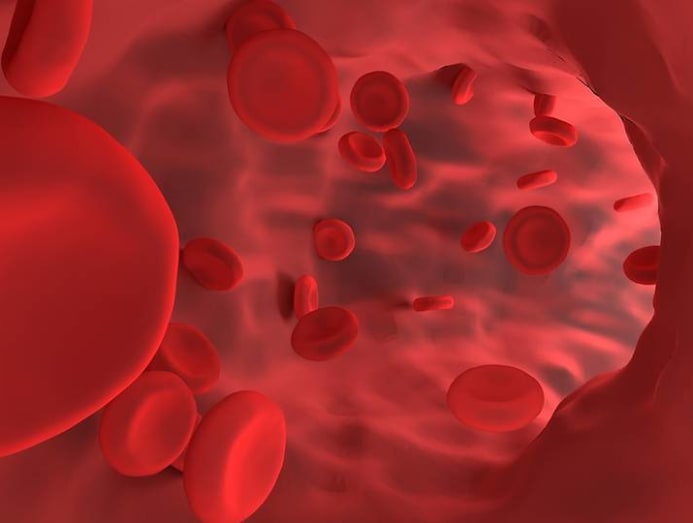Does WFH lead to deep vein thrombosis? It’s not about sitting down but weight gain
When it comes to DVT, weight gain that progresses into obesity and ageing are more of a risk factor than prolonged sitting, an expert tells CNA Lifestyle.

(Photo: Freepik/marymarkevich)
With all the butt contact you’ve been making with your chair since work-from-home (WFH) arrangements began earlier this year, you might have wondered at some point: Are you at risk of developing deep vein thrombosis (DVT)?
After all, isn’t the condition caused by a lack of movement – which is why long-haul air travel in I-can’t-feel-my-legs-anymore economy class has long been considered a major risk factor for DVT?
Although no one’s doing any travelling these days, most of us are stuck at home sitting down. And while WFH may have a link, it's not about sitting for extended periods of time. Rather, it's the weight gain that exacerbates into obesity that can put you at risk.

MORE THAN DEEP VEIN THROMBOSIS
First, some background on DVT. You may have read about it and have an idea on how the condition comes about: Blood clots in the vein travel to major organs, block blood flow and create a whole lot of trouble. Depending on where the clots end up – for instance, the heart, brain or lungs – they can cause a heart attack, stroke or difficulty breathing.
The broad term for blood clots that start in the veins is venous thromboembolism or VTE. And depending on where the clots form or travel to, they can be either known as DVT or pulmonary embolism (PE), according to Dr Yap Eng Soo, a senior consultant at the Department of Haematology-Oncology at National University Cancer Institute, Singapore.
According to the American Heart Association, patients older than 40 years are at higher risk of venous thromboembolism, and that risk doubles with each subsequent decade.
“DVT occurs when a blood clot forms in one or more of the deep veins in the body, usually in your legs,” he said. “If the blood clot forms in the arteries of the lungs, or if the clot migrates from the deep veins of the leg to the arteries of the lungs, it is termed pulmonary embolism (PE).”
And the latter shouldn’t be taken lightly; PE has a fatality rate of around 10 per cent to 30 per cent, noted Dr Tan Chuen Wen, a consultant with Singapore General Hospital’s (SGH) Department of Haematology.

Both DVT and PE can occur without any noticeable symptoms at all, said Dr Yap, although that is rare for PE.
If you notice swelling in your leg, and a cramping sensation or soreness in the calf, you might want to get yourself checked for DVT. According to Dr Yap, DVT may also create redness or discolouration on the affected part of the leg along with a warm sensation.
READ: Experiencing painful, heavy periods? You might have varicose veins in the pelvic area
On the other hand, PE can present most commonly with a sudden shortness of breath, chest pain that worsens when you breathe, low blood pressure, anxiety, dizziness, light-headedness, an irregular heartbeat or palpitations.
Dr Yap said that there can also be sweating, coughing or the coughing up of blood.
SO ARE YOU A SITTING DUCK FOR DVT?
Some of the more possible reasons for DVT cases – which were actually on the rise in the 1990s – are age and obesity.
“With an ageing population and increasing obesity in the population, VTE cases will increase,” said Dr Yap. Increased awareness of VTE and better medical imaging may also play a part in picking up more cases, he added.

According to the American Heart Association, patients older than 40 years are at higher risk of VTE, and that risk doubles with each subsequent decade.
More reason to watch your weight: Those with obesity have two times the risk of VTE as people with normal weight. And the higher the weight, the higher the risk, noted the association.
READ: Unexplained rashes: Why do they occur and when should you see a doctor?
If you remember your Biology lessons, veins have valves to help blood flow back to the heart. But with age, these valves thicken and become less flexible, according to a report in the AHA Journals, rendering them less effective at facilitating blood flow. “This decline can result in stasis and possibly even reflux,” the report noted.
As for weight being a risk factor, it can be attributed to the higher adipose or fat cells in obese individuals. These cells can increase platelet activity as well as place the body in a constant state of low-grade inflammation – both of which promote clot formation, explained News Medical website.

As for sitting a lot more, thankfully that’s not an issue per se. “Prolonged sitting and a sedentary lifestyle can only be considered as weak risk factors,” said Dr Tan.
Apparently, the key word here is “immobility”, which refers to the “complete or near-complete immobility after a major operation or severe medical conditions such as a stroke”, said Dr Tan.
Moving your body less does not qualify as immobility. The well-established risk factors, according to him, include:
- Recent trauma or surgery leading to immobility
- Pregnancy
- Use of hormonal replacement therapy or oral contraceptives
- Cancer
- Obesity
PREVENTION AND TREATMENT
Even though the risk of developing DVT or PE from being on your tush nine-to-five is “likely to be very small”, Dr Tan said that you could still lower your chances even further with these tips:
- Take regular breaks every hour or two to stand up and walk around
- Make sure you have enough space to stretch your legs
- Avoid crossing your legs for long periods of time
- Stay active and exercise regularly
- Stay well hydrated
- Avoid smoking

When it comes to treatment, patients are usually prescribed anticoagulants or blood thinners. Such medications do not actually dissolve the blood clot, but rather, prevent the clot from becoming larger, said Dr Tan.
They can also prevent new blood clots from forming, and to prevent long-term complications.
“Various anticoagulants, oral and injectable forms, are currently available and your doctor will discuss the options with you,” he said, adding that the recommended duration is at least three months.
Other treatments that may be used include thrombolytic therapy (commonly known as clot busters) or placing a filter (commonly known as an “umbrella”) in a major blood vessel, explained Dr Tan.





